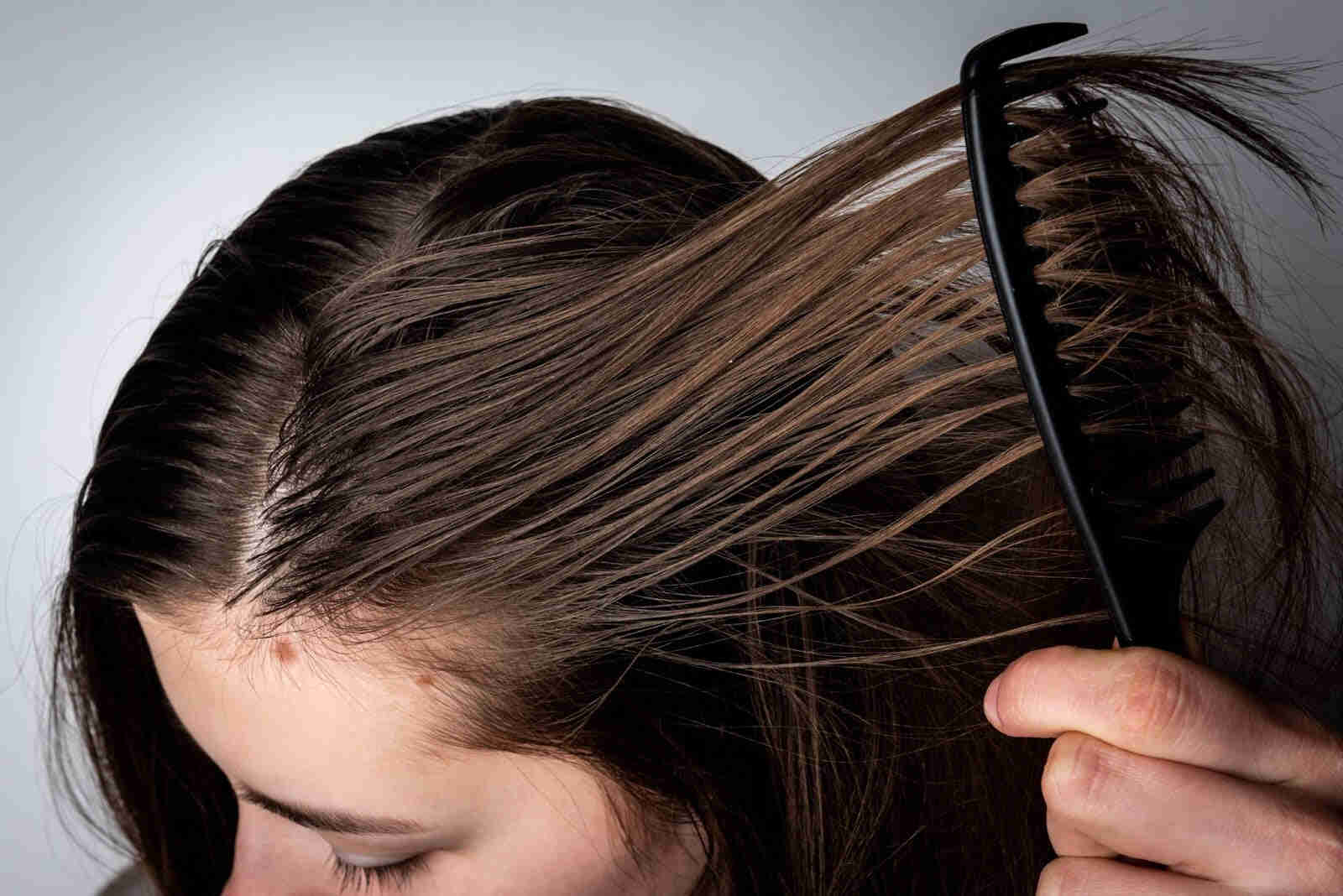
Hair care for oily hair: The ultimate guide
Excess oil on the scalp can make even freshly washed hair look flat, sticky, and lifeless. But the solution isn’t to wash your hair more often, it’s to understand your scalp’s natural balance, select the right formulations, and use targeted professional treatments. In this comprehensive guide, we’ll explore the science behind oily hair, expert routines for balancing sebum production, and the best professional products available on Belas Store to keep your hair feeling clean, light, and full of volume.
What causes oily hair?

Oily hair results from overactive sebaceous glands that produce excess sebum, the natural oil meant to protect your scalp and hair. While sebum is essential for hydration, too much of it leads to buildup, greasiness, and even scalp irritation.
Common causes include:
-
Hormonal fluctuations (especially during adolescence or stress)
-
Overwashing with harsh shampoos that trigger rebound oil production
-
Genetics, influencing gland activity
-
Improper conditioning, such as applying heavy masks to the roots
-
Environmental factors, like humidity or pollution
A well-formulated sebum-regulating shampoo or scalp exfoliating treatment can help restore balance without stripping the scalp.
How to choose the right shampoo for your scalp type?
Choosing the right shampoo for oily hair starts with knowing your scalp’s oil level and sensitivity.
|
Scalp Type |
Recommended Shampoo |
Key Ingredients |
|
Oily scalp |
Clarifying shampoo |
Zinc PCA, Tea tree oil |
|
Sensitive & oily scalp |
Gentle balancing shampoo |
Aloe vera, Panthenol |
|
Oily with dandruff |
Purifying anti-dandruff shampoo |
Salicylic acid, Piroctone olamine |
Expert tip: Avoid sulfates if your scalp feels tight or dry after washing. Look for mild surfactants and pH-balanced formulas that clean effectively without irritation.
How often should you wash oily hair?

The right frequency depends on your scalp’s oil production and the products you use. Most experts in trichology recommend:
-
Washing every 2 days for moderately oily hair
-
Using a dry shampoo between washes for freshness
-
Alternating with a mild balancing shampoo once or twice a week
If your scalp gets oily within 24 hours, consider double cleansing, first with a lightweight clarifying shampoo, followed by a hydrating formula focusing on lengths and ends.
The best professional treatments for oily hair
Belas Store offers several professional-grade treatments ideal for managing oily scalps:
-
Sebum-balancing masks, formulated with kaolin clay and mint extracts to absorb excess oil while soothing the scalp.
-
Cleansing shampoos use micelle molecules to trap impurities without over-drying.
-
Lightweight leave-in sprays add volume at the roots without greasy residue.
These treatments improve oxygenation and keep follicles free from buildup, which supports healthy hair growth.
Are natural oils good for oily hair?

It might seem counterintuitive, but natural oils can actually regulate sebum production when used correctly. The key is choosing non-comedogenic oils that mimic your scalp’s natural lipids.
|
Oil |
Benefit |
Usage |
|
Jojoba oil |
Balances sebum production |
Massage into scalp before shampooing |
|
Tea tree oil |
Antimicrobial, reduces dandruff |
Add 2 drops to shampoo |
|
Rosemary oil |
Stimulates circulation, reduces buildup |
Use in scalp massages |
|
Argan oil |
Lightweight, adds shine to ends |
Apply only on mid-lengths to ends |
You can find pure, cold-pressed oils at Belas Store, ideal for mixing into treatments or applying as pre-shampoo care.
Five expert tips to control scalp oiliness
-
Avoid heavy conditioners on the scalp, focus on the lengths and ends only.
-
Rinse with lukewarm water, hot water stimulates oil glands.
-
Use a clarifying rinse weekly, diluted apple cider vinegar balances scalp pH.
-
Clean your brushes frequently, residue can retransfer oil.
-
Limit heat styling, high temperatures increase sebum secretion.
Transitioning to a balanced routine may take two to three weeks, but consistent use of the right products will show visible improvement.
Does oily scalp cause hair loss?
Excess oil can clog follicles, hindering hair growth and leading to thinning hair over time. When sebum mixes with dead skin cells, it creates an environment favorable for Malassezia yeast, which can trigger inflammation and follicle miniaturization.
Using scalp tonics with niacinamide, caffeine, or salicylic acid helps detoxify the scalp and promote stronger roots.
The role of diet in managing oily scalp
A balanced diet rich in zinc, vitamin B6, and omega-3 fatty acids supports scalp health. Foods like pumpkin seeds, salmon, and leafy greens can help regulate sebum naturally. Reducing high-glycemic foods and dairy may also improve scalp conditions.
Should you use dry shampoo regularly?
Dry shampoo is a lifesaver, but excessive use can cause buildup. Choose rice-starch or clay-based dry shampoos over talc formulations. Apply from a distance of 20 cm, let it absorb for a few minutes, and brush thoroughly to distribute evenly.
How to style oily hair for a fresh look
Use volumizing sprays and texturizing powders instead of serums or oils at the roots. Blow-dry with your head upside down for lift and avoid touching your hair throughout the day, as fingertips transfer oil.
Conclusion
Managing oily hair is about achieving harmony between cleansing and nourishment. The key lies in using pH-balanced, sebum-regulating products and incorporating targeted scalp care. By following the expert tips above and exploring professional-grade shampoos, tonics, and treatments available on Belas Store, you can enjoy cleaner roots, balanced oil levels, and long-lasting volume, all without compromising hair health.


